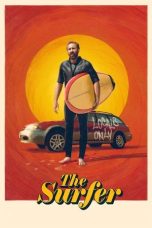The Last Black Man in San Francisco (2019) Review: A Poignant Exploration of Home and Identity
Introduction
“The Last Black Man in San Francisco” (2019) is a visually stunning and emotionally resonant film that delves into themes of gentrification, displacement, and the longing for a sense of belonging. Directed by Joe Talbot and starring Jimmie Fails, who also co-wrote the story based on his own life, this film is a powerful ode to a rapidly changing San Francisco and a meditation on what it means to call a place home.
Set against the backdrop of a city that is both a character and a canvas, “The Last Black Man in San Francisco” is more than just a story of one man’s quest to reclaim his childhood home. It’s a profound examination of memory, friendship, and the intricate ties between identity and place.
This review will explore the film’s narrative, its visual and thematic depth, and where you can watch “The Last Black Man in San Francisco” online, especially in the United States.
Plot Overview
The film follows Jimmie Fails (played by himself), a young Black man who spends his days caring for a Victorian house in the Fillmore District of San Francisco, a house his grandfather supposedly built in the 1940s. Despite the house now being occupied by an elderly white couple, Jimmie and his best friend, Mont (Jonathan Majors), sneak in regularly to perform upkeep on the property, painting the trim and tending the garden as if it were still theirs.
When the house is suddenly vacated due to a family dispute, Jimmie seizes the opportunity to move in, claiming it as his own. However, as he tries to reclaim his family’s legacy, he is confronted with the harsh realities of gentrification, the erosion of his neighborhood, and the complexities of his relationship with the past.
As the story unfolds, the film juxtaposes Jimmie’s deep emotional connection to the house with the cold, impersonal forces of real estate and societal change. Through this lens, “The Last Black Man in San Francisco” explores the broader issues of displacement that many African Americans face in cities across the United States.
Visual and Thematic Depth
One of the most striking aspects of “The Last Black Man in San Francisco” is its cinematography. The film is a visual poem, capturing the beauty and contradictions of San Francisco in every frame. Director Joe Talbot, in collaboration with cinematographer Adam Newport-Berra, uses wide shots to emphasize the grandeur and history of the city while also highlighting the isolation and alienation felt by its long-time residents.
The film’s visual style is both dreamlike and raw, reflecting the inner turmoil of its characters. The use of vibrant colors contrasts with the melancholy tone of the narrative, creating a poignant juxtaposition that underscores the bittersweet nature of Jimmie’s journey.
Thematically, the film is rich with layers of meaning. It examines the loss of cultural heritage and the impact of gentrification on communities of color, particularly in cities like San Francisco, where skyrocketing property values have pushed many residents out of their homes. Through Jimmie’s story, the film asks important questions about ownership, legacy, and what it means to belong.
The film also delves into the idea of masculinity, particularly Black masculinity, and how it intersects with vulnerability, friendship, and identity. Jimmie and Mont’s friendship is depicted with tenderness and depth, challenging stereotypes and offering a nuanced portrayal of male relationships.
Performances and Characters
The performances in “The Last Black Man in San Francisco” are nothing short of extraordinary. Jimmie Fails delivers a quietly powerful performance, bringing authenticity and emotional depth to his portrayal of a man grappling with the loss of his past and the uncertainty of his future. His understated delivery and natural charisma make Jimmie a relatable and sympathetic character.
Jonathan Majors, who plays Mont, gives a standout performance as Jimmie’s loyal and introspective friend. Mont, an aspiring playwright and artist, serves as both a confidant and a mirror to Jimmie, reflecting his struggles and helping him navigate his complex emotions. Majors’ portrayal of Mont is nuanced and heartfelt, bringing warmth and humor to the film.
The supporting cast, including Danny Glover as Mont’s blind grandfather and Tichina Arnold as Jimmie’s estranged aunt, adds depth to the story, each character contributing to the film’s exploration of family, history, and community.
A Love Letter to San Francisco
“The Last Black Man in San Francisco” is as much about the city as it is about its characters. The film serves as a love letter to San Francisco, celebrating its unique beauty and history while mourning the loss of its soul amid rapid gentrification. The city is depicted as a place of contradictions, where old and new, rich and poor, tradition and progress coexist in an uneasy balance.
The film’s soundtrack, featuring a mix of classical music, original compositions, and contemporary songs, further enhances its emotional impact. The music complements the film’s visuals, creating a haunting and evocative atmosphere that lingers long after the credits roll.
Where to Watch “The Last Black Man in San Francisco” Online in the U.S.
For those interested in experiencing this powerful film, several streaming services and platforms in the United States offer “The Last Black Man in San Francisco” for streaming, rental, or purchase:
Streaming Services:
- Amazon Prime Video: The film is available to stream with an Amazon Prime subscription. It can also be rented or purchased directly on the platform.
- Apple TV+: Subscribers can stream “The Last Black Man in San Francisco” on Apple TV+ as part of their subscription.
- Kanopy: Many public libraries in the U.S. offer access to “The Last Black Man in San Francisco” through Kanopy, a free streaming service available with a library card.
Rental and Purchase Options:
- Amazon Prime Video: You can rent the film in HD for around $3.99 or purchase it for approximately $14.99.
- Google Play Movies & TV: The film is available for rent or purchase on Google Play, with rental prices starting at $3.99 and purchase options around $14.99.
- Apple iTunes: On iTunes, “The Last Black Man in San Francisco” can be rented for $3.99 or purchased for $14.99, with the option to download it for offline viewing.
- Vudu: Vudu offers rental and purchase options, with similar pricing to other platforms. Vudu also supports 4K UHD viewing, enhancing the film’s visual experience.
Conclusion
“The Last Black Man in San Francisco” is a deeply moving and visually stunning film that explores the intersection of home, identity, and belonging in a rapidly changing world. With its powerful performances, rich themes, and evocative depiction of San Francisco, the film stands out as one of the most poignant and thought-provoking works of recent years.
Whether you’re drawn to the film for its exploration of gentrification, its beautiful cinematography, or its heartfelt story of friendship and family, “The Last Black Man in San Francisco” is a must-watch. With various streaming and rental options available, it’s easy to access this modern masterpiece and experience its profound impact. So, take the time to immerse yourself in this cinematic journey through a city and a soul in search of home.

















